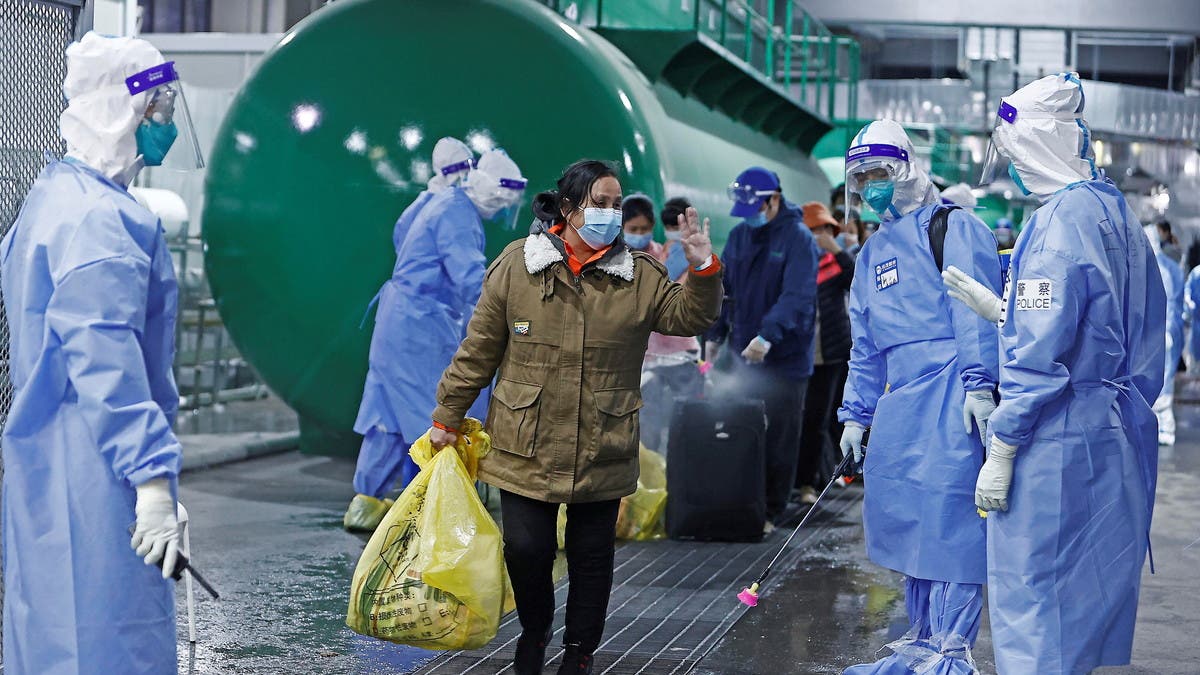Almost two months into China’s worst Covid-19 outbreak, the vast country has reported only two deaths – a striking number that’s the subject of growing debate because it appears to best even nations with higher vaccination rates.
China reported more than 386,000 cases in the first six weeks of its latest outbreak, giving it a fatality rate of about 0.5 for every 100,000 people infected through April 13. The deaths both occurred in the northeastern province of Jilin, while financial hub Shanghai, now the epicenter of the country’s outbreak with a record 27,719 cases on Thursday, hasn’t reported any so far.
For the latest headlines, follow our Google News channel online or via the app.
The low death rate is in marked contrast to what happened when the highly transmissible omicron variant coursed through Singapore, South Korea, Australia and New Zealand, some of the world’s best performers in curbing Covid and vaccinating to a high level, a data analysis by Bloomberg News shows.
In New Zealand, where more than 95 percent of those 65 and older have been fully inoculated, just four people died in the first five weeks of its omicron outbreak before the number shot up.
By the sixth week – where China is now – its fatality rate had risen to 5 for every 100,000 infections. That’s ten times the rate in China, despite the fact that China has fully vaccinated only 81 percent of people aged 60 and above.
The divergence has caught the eye of experts.
“The bottom line is I’m skeptical about the death rate reported in China,” said Peter Collignon, an infectious disease physician and professor at the Australian National University Medical School in Canberra.
With omicron driving the current outbreak in China, “it’s a bit hard to believe that in Shanghai it’s behaving differently to everywhere else in the world where this is circulating.”
There is speculation China – mindful of its strong pandemic track record and the scrutiny its stringent Covid Zero policy is now receiving – isn’t fully disclosing the scale of the current outbreak.
At least 20 people died at an elderly-care facility in Shanghai that was hit recently by Covid, though the causes of death remain unclear, the Wall Street Journal reported earlier this month.
China’s omicron outbreak was expected to be deadly because of the relatively low vaccination rate among the elderly and the use of less potent domestically developed shots, according to health experts who spoke to Bloomberg. The fact that reported numbers haven’t budged is therefore raising questions.
Only 57 percent of the elderly in China have gotten a booster shot. The country’s strict Covid Zero policy, which successfully averted outbreaks before the highly transmissible omicron variant emerged, means there have been few infections that would have built up the nation’s natural immunity.
For a place like China where the vaccination rate is good – at 88 percent for the overall population – but lower than some of the world’s highest inoculating countries, the death rate should be at least 100 per 100,000 infected people, according to Collignon.
Read the latest updates in our dedicated coronavirus section.
A case in point is Hong Kong, which is still recovering from what became the world’s deadliest outbreak at the time. The city shares similarities with Shanghai in that a lot of the population was vaccinated with Chinese shots and its elderly immunization rate before the latest wave was even lower than China’s.
More than 8,700 people died in Hong Kong during the latest surge, giving it a fatality rate of 739 per 100,000 infections.
Still, Shanghai did lock down unlike Hong Kong, a move that has induced much hardship on the population, but which may have contained cases and potentially even deaths. It’s also possible the virus hasn’t penetrated China’s elderly population as deeply as it did in other countries, reducing its harm.
Lagging deaths
There is a lag of two to four weeks between an increase in infections and severe outcomes such as death, said Paul Griffin, a professor from the University of Queensland in Brisbane. The number of deaths is expected to start to climb by two months into the outbreak, said Griffin, and China is approaching that mark.
Shanghai officials said on Thursday that nine residents have serious infections. Eight of them are over the age of 70 and have other underlying medical conditions.
“I guess that lag will declare itself over the coming week, as we start to see at least some of those people will progress to more severe consequences,” he said.
Researchers at the University of Washington’s Institute of Health Metrics and Evaluation estimate that more than 33,000 people have died already in China from Covid, seven times the official number – which at 4,638 gives it one of the lowest death tolls in the world.
A further 136,000 people are expected to die in the country between now and August 1, said Ali Mokdad, chief strategy officer for population health at the university.
The undercounting of Covid deaths is common across the world, although in some cases it seems more extreme in China, said Mokdad, who helped establish the field epidemiology program at the China Centers for Disease Control and Prevention.
The phenomenon could be caused by Covid control personnel being overtaxed, with the same group of people having to do the work of testing, monitoring and containing the outbreak, while keeping up with the surveillance systems
“We believe China will be able to control the spread of the pandemic right now, but not for long,” said Mokdad. “The number of deaths being reported right now from China, I don’t think they are the full story, either from a lag in reporting or something else.”
Read more:
Pfizer to expand COVID-19 booster shots to healthy five to 11-year-olds in US
Worldwide COVID-19 cases surpass 500 million as omicron variant BA.2 surges
COVID-19: UAE updates travel protocol of unvaccinated Emirati citizens as of April 19

 World3 years ago
World3 years ago
 World3 years ago
World3 years ago
 Business1 year ago
Business1 year ago
 Entertainment7 years ago
Entertainment7 years ago
 World7 years ago
World7 years ago
 Entertainment7 years ago
Entertainment7 years ago






